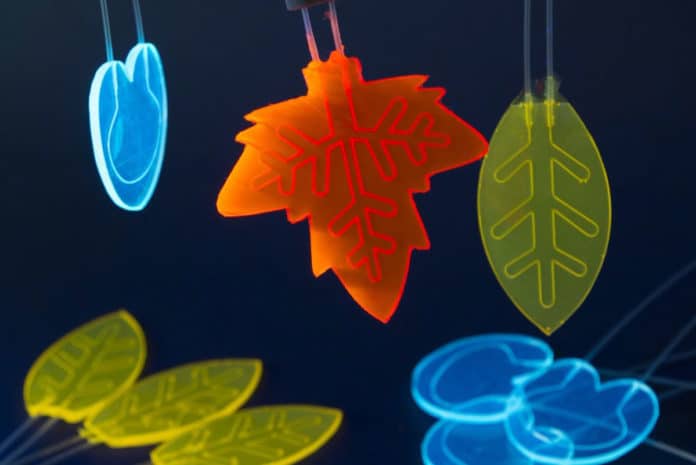Solar‐energy‐conversion advancements are very alluring due to their potential. Until now, most of the studies have focused on solar electricity, solar thermals, and solar fuels, while the synthesis of chemicals powered by solar light has gathered significantly less scrutiny.
Now, scientists for the first time demonstrated a diverse set of photon‐driven transformations that can be efficiently powered by solar irradiation with the use of solvent‐resistant and cheap luminescent solar concentrator based photomicroreactors.
Scientists from the Eindhoven University of Technology have presented their mini-reactor that is similar to leaves in nature and absorbs sunlight and drives chemical reactions. Fascinatingly, using the reactor, they were able to produce two types of medicine, the antimalarial artemisinin, and the antiparasitic drug ascaridole.
The newly developed reactor is a refinement of the artificial leaf mini-reactor presented by the team in 2016. Inspired by nature, the prototype overcame the core obstacle of using solar energy to make chemical products, something scientists dreamed about for years.
The problem is that the available sunlight creates too little energy to commence reactions. The scientists succeeded because of a trick that they duplicated from leaves in nature. They designed very thin channels in so-called Luminescent Solar Concentrators (LSCs), a silicon rubber, much in the manner in which veins go through a leaf.
Sunlight activates the molecules of the liquids running through the microchannels and starts a chemical reaction. The combination of confining light and the microchannels made the light intensity high enough for the reactions to take place.
In this newly designed reactor, scientists replaced silicone rubber with PMMA (Poly(methyl methacrylate) or Plexiglas). The PMMA material is cheaper and readily available. It also has a higher refractive index, so that the light stays better confined.
During the study, scientists showed the versatility of the reactor by completing various chemical reactions. Two of these comprise the production of a drug: the antimalarial artemisinin and ascaridole, a defense against parasitic worms.
Associate professor, Timothy Noel said, “With this reactor, you can make medicines wherever you want. You only need sunlight and this mini-factory.”
“The reactor has the potential to solve a dire problem for the pharmaceutical industry, namely the increasing pressure to produce sustainably. The chemical reactions for producing drugs currently require toxic chemicals and much energy in the form of fossil fuels. By using visible light, the same reactions become sustainable, cheap, and, in theory, countless times faster.”
“There are hardly any obstacles to putting this technology in practice, except for the fact that it only works during daylight. Artificial leaves are perfectly scalable; where there is the sun, it works. The reactors can be easily scaled, and its inexpensive and self-powered nature makes them ideally suited for the cost-effective production of chemicals with solar light. I am therefore very positive that we should be able to run a commercial trial of this technology within a year. All this would require is a partnership with a pharmaceutical company that is interested in continuing this journey with us.”
The research is published in the journal Angewandte Chemie.
